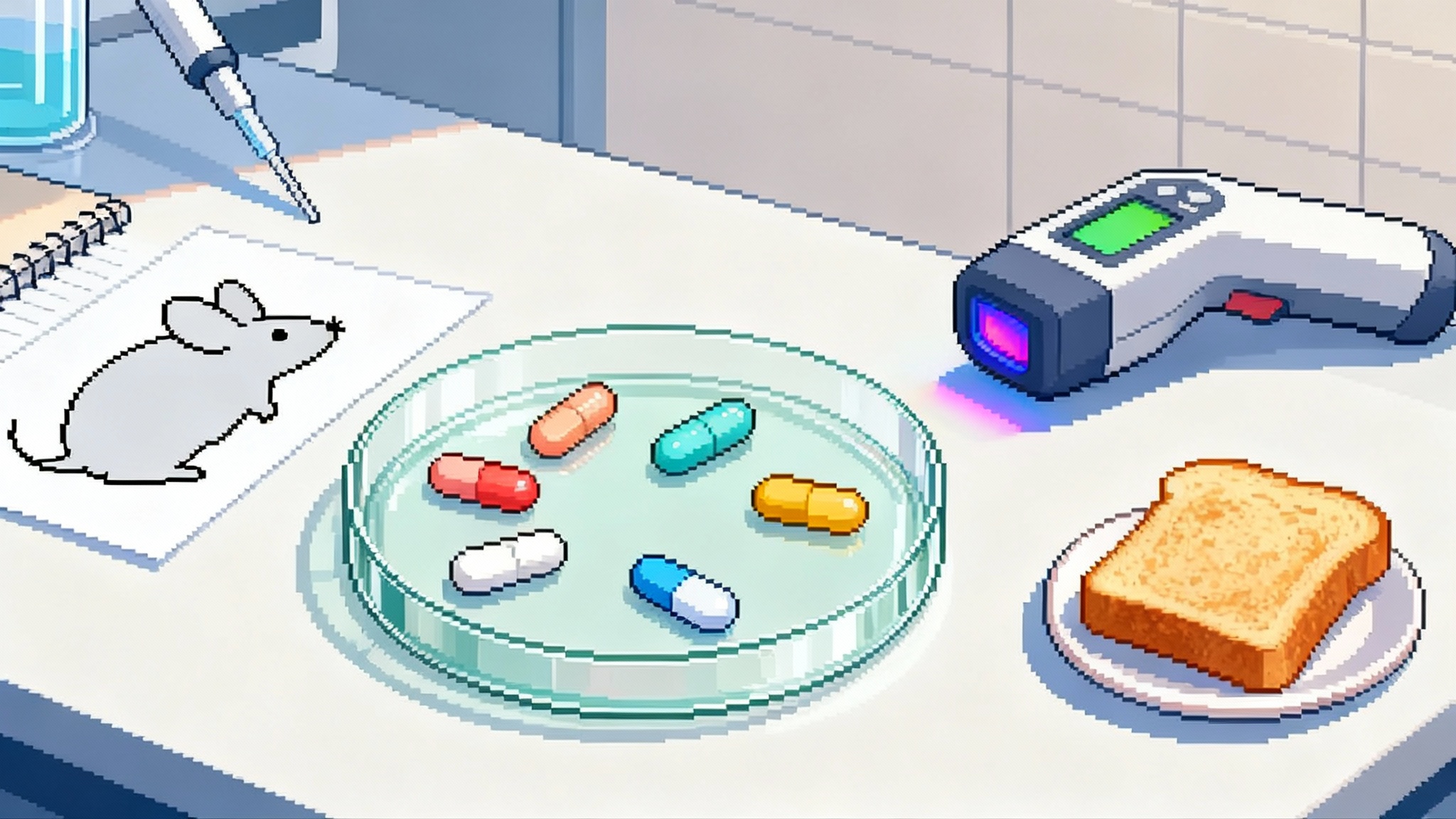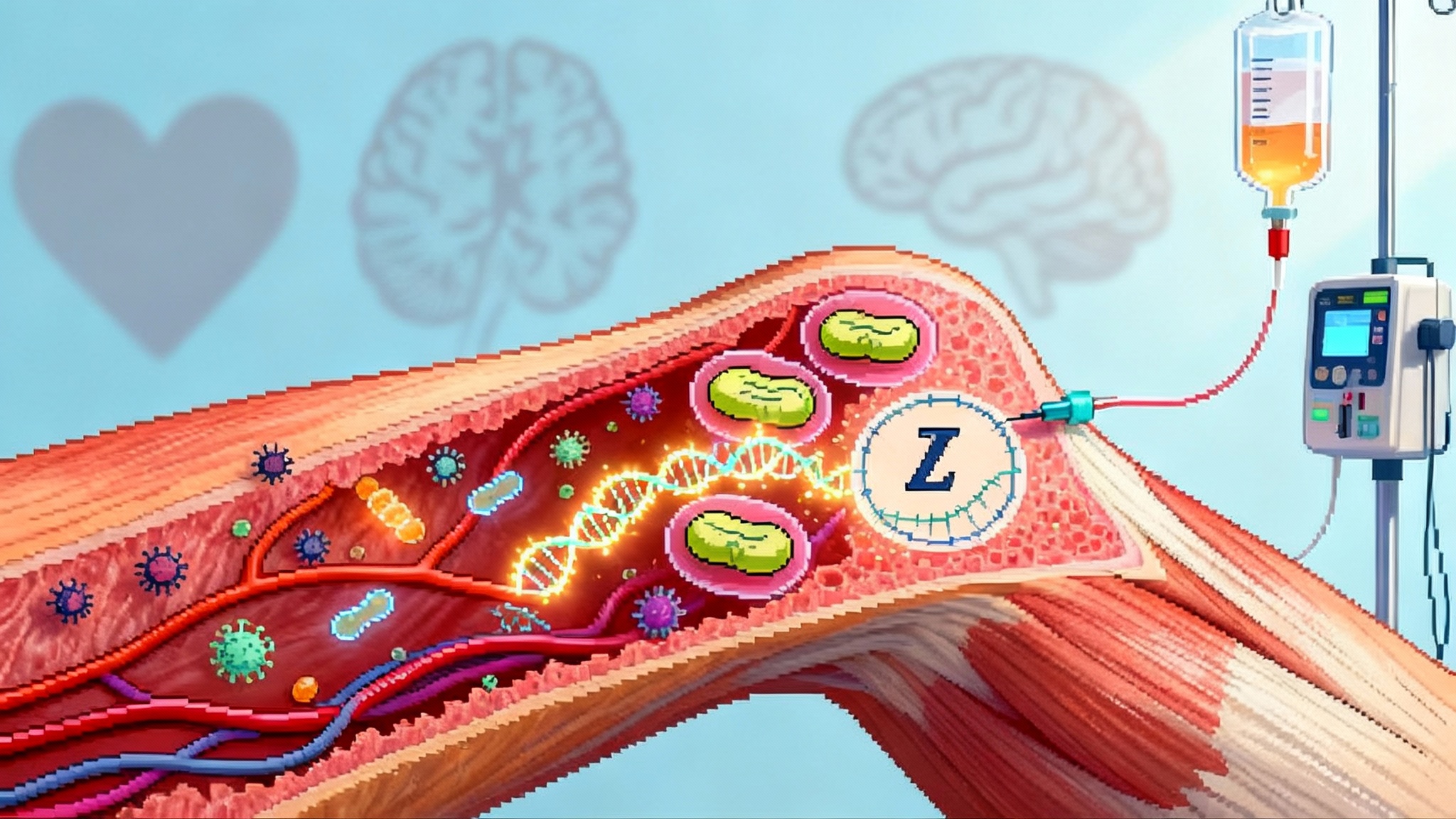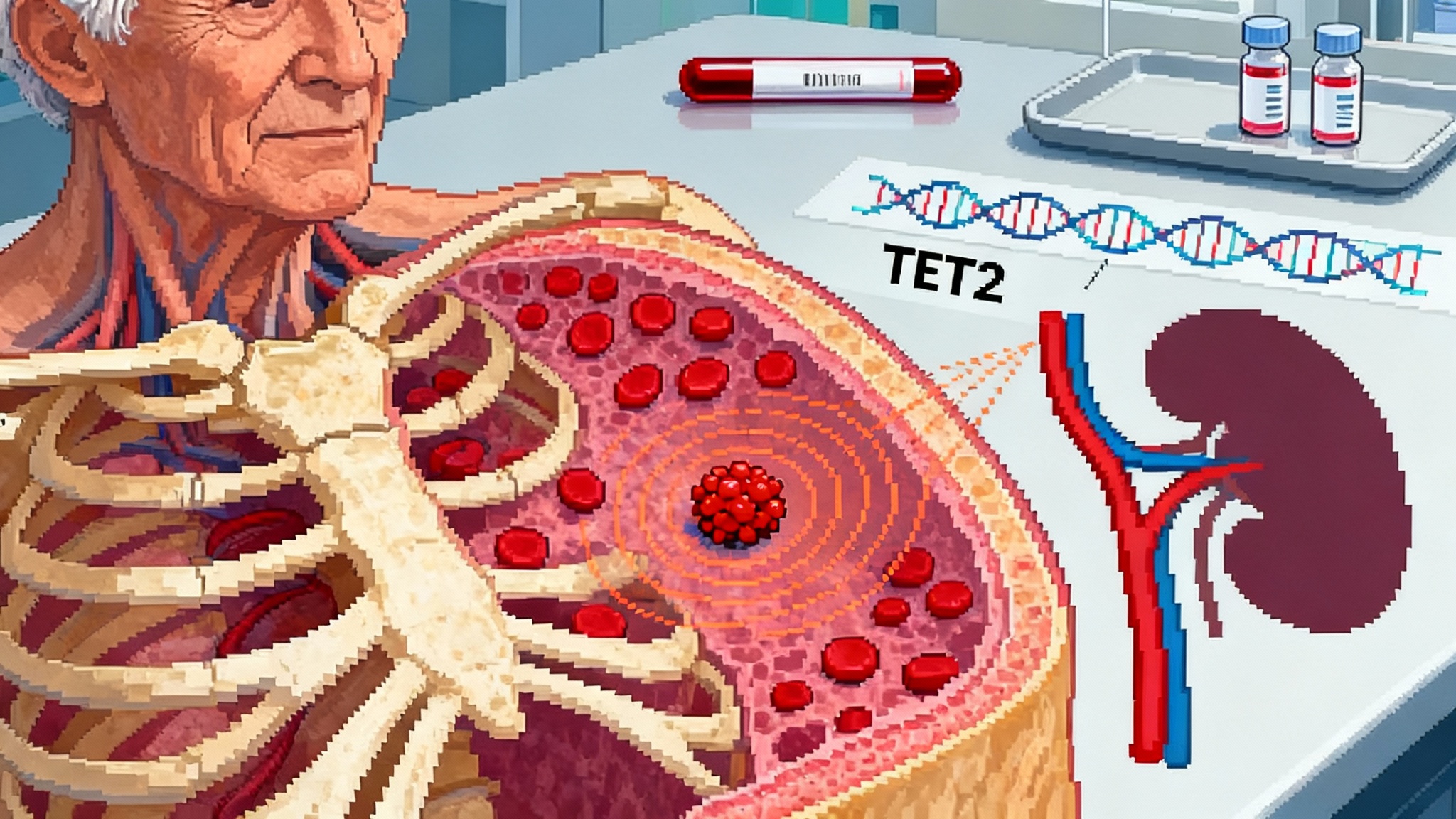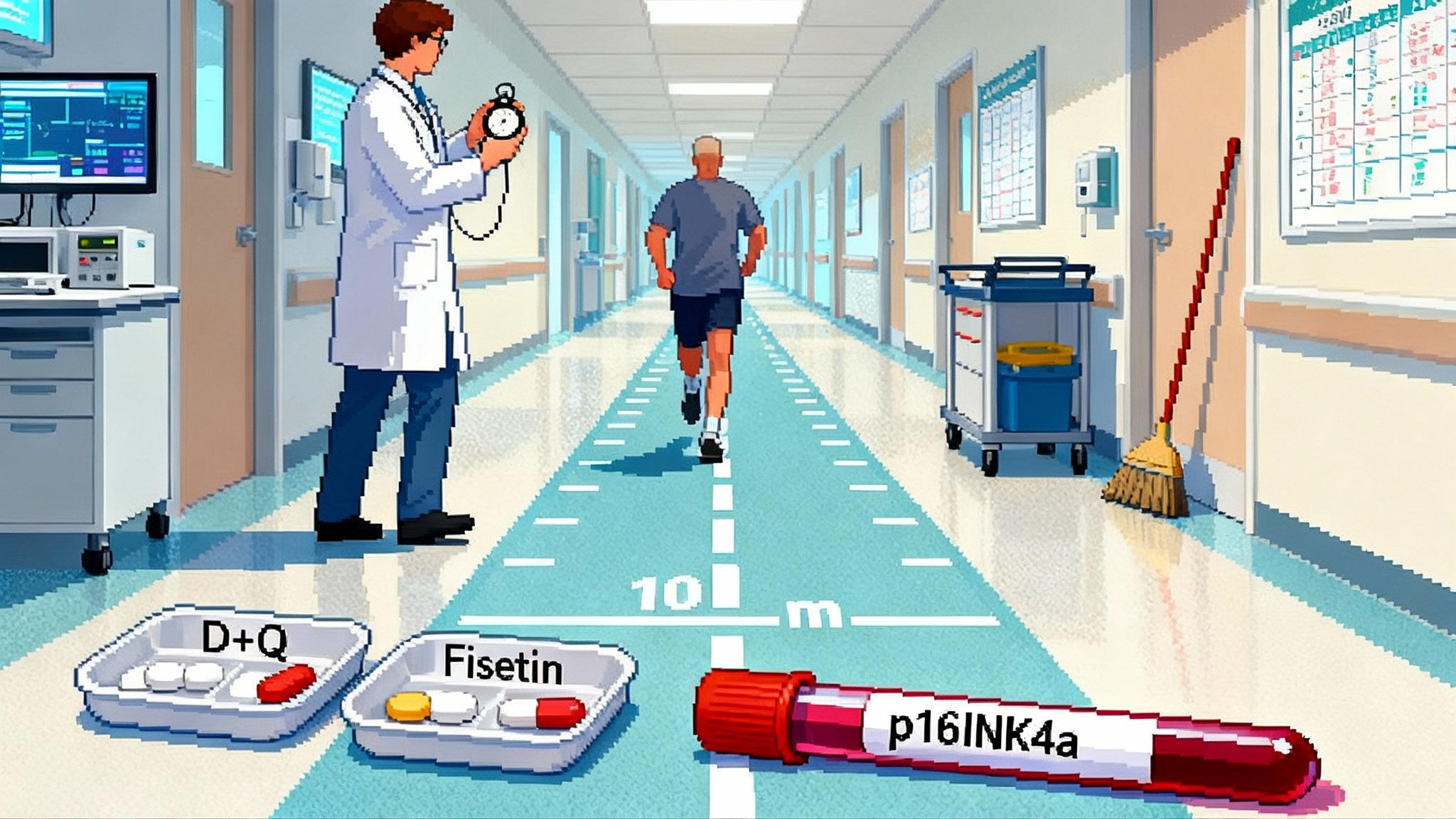Glycation’s 2025 Pivot: Anti-glycation Enters Trials
Mouse data put anti-glycation upstream of multiple hallmarks. Here is what Gly-Low changes, how to design a human trial, what to measure now, and the milestones to watch in 2026.

The moment glycation became testable medicine
October 2025 quietly redrew the longevity playbook. A study in Cell Reports reported that a five-compound combination nicknamed Gly-Low cut methylglyoxal load, improved insulin sensitivity, reshaped hunger signaling, and extended lifespan in mice even when treatment began at 24 months of age, the murine equivalent of roughly 70 in humans. The combo blended familiar molecules with distinct roles in carbonyl stress and metabolism: nicotinamide, alpha-lipoic acid, thiamine, pyridoxamine, and piperine. In aged mice, the researchers saw better glucose control, improved motor coordination, and longer remaining lifespan. The mechanistic twist was upstream: dialing down methylglyoxal, a reactive glycolysis byproduct, reduced downstream advanced glycation end products. In the hypothalamus, the animals’ appetite circuits shifted away from constant feed-me signals, so the mice voluntarily ate less while preserving lean mass. See the primary results in the Cell Reports Gly-Low study in mice.
This shift fits a year that also saw progress in adjacent systems, including thymus revival turns immune aging and a mitochondrial editing leap to injectables.
If previous anti-aging strategies resembled firefighters racing from blaze to blaze, Gly-Low is more like turning off a gas main. By targeting methylglyoxal and the advanced glycation end products it creates, the intervention sits upstream of multiple hallmarks that normally require separate hoses: proteostasis, mitochondrial fitness, altered intercellular communication, extracellular matrix integrity, and nutrient sensing.
Why methylglyoxal sits upstream of several hallmarks
Think of methylglyoxal as caramel gone wrong. In your kitchen, the Maillard reaction browns bread, hardens crusts, and delivers flavor. In your body, the same chemistry bonds sugars to proteins, lipids, and DNA, creating sticky cross-links that stiffen artery walls, cloud lenses, and bog down cellular machinery. These products are called advanced glycation end products. Here is how the chemistry reaches across hallmarks:
- Proteostasis and protein cross-linking: Glycation modifies long-lived proteins like collagen and elastin, making them harder and more brittle. Cells then waste energy on damaged-material management that could have gone to repair and housekeeping.
- Mitochondrial function and redox balance: Methylglyoxal can damage mitochondrial proteins and DNA, amplifying reactive oxygen species and lowering energy output. Tired mitochondria echo across tissues as weakness and metabolic slowdown.
- Genomic integrity and epigenetics: Dicarbonyls create DNA adducts and interfere with methylation patterns, nudging epigenetic aging forward. That is one reason researchers watch epigenetic clocks when they try to slow biological aging.
- Sterile inflammation and receptor signaling: AGEs activate the receptor for advanced glycation end products on immune and endothelial cells. The result is persistent, low-grade inflammation that feeds back into insulin resistance and vascular aging.
- Extracellular matrix and organ stiffness: Cross-links in collagen reduce elasticity in vessels and skin. That is measurable as higher pulse wave velocity and higher skin autofluorescence, two noninvasive readouts with clinical relevance.
For parallel upstream interventions, see our plasma exchange RCT coverage. Gly-Low’s logic is simple: if you reduce methylglyoxal and its glycation footprints like MG-H1, you relieve pressure across many systems at once. The Cell Reports team also detected a reset in hunger biology. Ghrelin-related signaling in the hypothalamus was less pushy, and nutrient-sensing pathways looked more youthful. That upstream position helps explain why the combo worked even when it started late in life, where classic calorie restriction usually falls short.
From mouse to human: a practical, human-ready roadmap
The leap to people requires two things: a design that proves mechanism and a design that respects safety and regulation.
Trial design
- Population: Adults aged 50 to 75 with either overweight or insulin resistance. Enrich for participants with higher skin autofluorescence or elevated MG-H1 at baseline to increase signal.
- Randomization: Placebo versus full Gly-Low combination. A smaller exploratory factorial arm could test a partial combo, but the primary question is the real-world effect of the five-compound mix.
- Duration: 6 months primary, 12 months extension. Glycation is slow, but methylglyoxal turnover and hunger signaling shift within weeks, so 3-month interim analyses are sensible.
- Primary endpoints: Change in MG-H1 in plasma or urine by mass spectrometry. Change in skin autofluorescence at the forearm as a noninvasive tissue marker. Change in continuous glucose metrics, especially post-meal excursions and glycemic variability, since glycemic swings drive methylglyoxal spikes. Change in body composition with particular attention to lean mass.
- Secondary endpoints: Insulin sensitivity, liver fat by imaging if available, vascular aging metrics like pulse wave velocity, and frailty indices that capture real-world function. Add appetite questionnaires and food-choice tasks to test the hypothalamic hypothesis.
- Aging endpoints: Epigenetic clocks to capture systemic impact. Favor newer-generation measures such as DunedinPACE for rate of aging, and composite clocks like GrimAge2 and PhenoAge for disease-relevant risk. These provide small but interpretable shifts at population scale.
- Safety and drug interactions: Pre-specify neurological monitoring because vitamin B6 family compounds have dose ceilings for neuropathy, and watch liver enzymes given nicotinamide’s upper intake limits. Because piperine can inhibit cytochrome P450 enzymes and the P-glycoprotein transporter, screen for participants on narrow-therapeutic-index medications like anticoagulants, antiepileptics, or certain statins. Build a pharmacy interaction check into enrollment and mid-study visits.
- Statistics: Enrich for biomarker-elevated participants to reduce sample size. Power calculations should hinge on a conservative 10 to 15 percent relative drop in MG-H1 and a 0.2 to 0.3 standard deviation change in skin autofluorescence at 6 months. Include pre-registered subgroup analyses for participants with the highest baseline glycemic variability.
Safety, sourcing, and repurposability
- Nicotinamide: A common vitamin B3 form with a long safety record at moderate doses. It feeds nicotinamide adenine dinucleotide pools without the flushing seen with niacin. High doses can elevate liver enzymes, so stay within tolerability bands and monitor.
- Alpha-lipoic acid: Widely used in neuropathy research, with gastrointestinal side effects as the main concern. It has redox and mitochondrial actions that may complement glycation lowering.
- Thiamine: Vitamin B1, safe at conventional doses and often depleted in metabolic disease. High doses can be used in research with minimal issues.
- Pyridoxamine: A natural vitamin B6 vitamer with direct anti-glycation chemistry. Regulatory status matters; in the United States it is not currently sold as a dietary supplement because of its prior classification history as a drug. Including pyridoxamine in any over-the-counter product will likely require an investigational new drug path. That is a feature, not a bug, for a trial-grade formulation.
- Piperine: A bioenhancer from black pepper that can boost absorption by inhibiting drug-metabolizing enzymes and transporters. This is useful for a combo pill but it creates predictable interactions, so a pharmacist-led screen is mandatory.
Regulatory path
A clean route is a university-sponsored, double-blind, placebo-controlled study using good manufacturing practice versions of the five components in a fixed-dose combination, filed under an investigational new drug. The primary clinical indication can be obesity or prediabetes, with pre-specified aging endpoints. That keeps the bar realistic while generating data valuable for longevity claims later.
What to measure in people right now
The strength of the anti-glycation idea is that the markers are measurable in ordinary clinics.
- Skin autofluorescence: Collagen-bound AGEs fluoresce under ultraviolet light. Research-grade tabletop sensors can capture a 12-second read on the forearm. These devices are investigational in the United States but widely used in studies. Values rise with age and cardiometabolic risk, and they change with long-term chemistry in the extracellular matrix, which is exactly where cross-links matter.
- MG-H1: Methylglyoxal-derived hydroimidazolone is the most abundant methylglyoxal adduct in proteins. Liquid chromatography mass spectrometry assays can track it in plasma and urine and are sensitive to intervention.
- Epigenetic clocks: The 2025 analysis from the DO-HEALTH trial showed that one gram per day of omega-3 slowed multiple methylation clocks by about three to four months over three years, and a combined omega-3, vitamin D, and strength exercise arm did a little better on a subset of clocks. The effect is small but directionally consistent with the idea that upstream chemistry moves downstream aging measures. See the PubMed summary of DO-HEALTH methylation results.
These three layers align neatly. Skin autofluorescence reflects tissue cross-links, MG-H1 reflects current carbonyl burden, and epigenetic clocks reflect whole-body context. Together they can show whether an anti-glycation program is changing the chemistry that aging rides on.
The kitchen lever that already works
While we wait for human trial readouts, two accessible levers already map to the same chemistry.
- Lower glycemic index eating: Glycemic spikes fuel methylglyoxal creation. A continuous glucose monitor makes this visible in days. Swapping to low-glycemic staples lowers post-meal peaks and variability, which in turn lowers dicarbonyl stress. Simple swaps do most of the work: steel-cut oats over sweet cereal, legumes over white rice, sourdough over ultra-soft white bread, whole fruit over juice, and protein or fiber at the start of meals to blunt the glucose rise.
- Heat and moisture in cooking: Dry, high-heat methods like grilling and deep frying accelerate AGE formation, the same browning you see on a crust. Moist-heat methods like steaming, stewing, or pressure cooking produce fewer AGEs. Acidic marinades and shorter cook times also help. If you enjoy searing, shift frequency rather than forbidding the technique.
- Omega-3 intake: The 2025 methylation-clock data make a pragmatic case for one gram per day in older adults, ideally alongside strength training and vitamin D under medical guidance. The effect size is measured in months, not years, but it is a durable nudge in the right direction.
None of these changes require exotic products. What they require is consistency, the same way plaque forms in arteries and cross-links accumulate in collagen slowly and predictably when chemistry runs unchecked.
What to watch in 2026
Acceleration is the theme.
- First pilot readouts: At least one university trial of a glycation-lowering cocktail has a planned completion around late 2026. Watch for interim safety, appetite, and biomarker data over the summer. The most informative early signals will be MG-H1 shifts and skin autofluorescence movement, followed by epigenetic clock changes at 12 months.
- Regulatory signals: Keep an eye on how regulators treat combinations of familiar ingredients when the claim is not weight loss but upstream glycation control. Expect clear guidance on pharmacology screens for piperine and clarity on the legal status and sourcing of pyridoxamine in research.
- Consumer-grade monitoring: Expect the first credible consumer or clinic-light devices for AGE monitoring to pilot in 2026. The convergence of low-cost ultraviolet light sources, smartphone optics, and calibration data sets makes at-home or pharmacy-corner skin autofluorescence plausible. If validation studies show that these devices track with lab-based measures, insurers could experiment with coverage for high-risk groups.
- Industry moves: Some companies will try to spin one or two of the five compounds into a new branded product. The real value is in the combination and in proving it changes upstream chemistry. That means manufacturing quality, pharmacovigilance, and biomarker transparency will separate serious programs from mere relabeling.
How to act now without skipping the science
- If you are a clinician: Build a small glycation panel into your practice. Add skin autofluorescence where you can access it, order MG-H1 when a partner lab offers it, and add a rate-of-aging methylation measure when budget allows. Pair it with continuous glucose monitoring in at-risk patients for a three-month run-in.
- If you are a researcher: Pre-register a 6 to 12 month randomized trial with MG-H1 as the primary endpoint, skin autofluorescence as a co-primary, and DunedinPACE plus GrimAge2 as secondary outcomes. Pre-specify drug interaction exclusions around piperine. Publish protocols so the field can converge.
- If you are a builder: Prototype a low-cost skin autofluorescence reader with standardized forearm positioning, a fixed ultraviolet spectrum, and an internal reference tile for calibration. Your moat is validation against biopsy-proven or lab-based measures.
- If you are a patient: Use food timing and composition to tame post-meal glucose peaks. Consider omega-3 intake after discussing with your clinician. Choose more moist-heat cooking and save browned, crispy foods for fewer occasions. Track simple outcomes like post-meal energy and waist circumference while you wait for better consumer biomarker options.
The bigger picture
Aging is not a single fuse; it is a bundle of wires that fray together. Glycation is one of the few places where cutting a single upstream wire dims multiple downstream bulbs. That is what makes the 2025 Cell Reports data so interesting. A modest, well-chosen combination acted where the chemistry begins, not where the damage ends. If human trials show the same pattern using real biomarkers in real clinics, anti-glycation will move from theory to therapy. The field will not stop there, but this is how durable progress looks: start upstream, measure what matters, keep the tools simple, and push the timeline forward.








